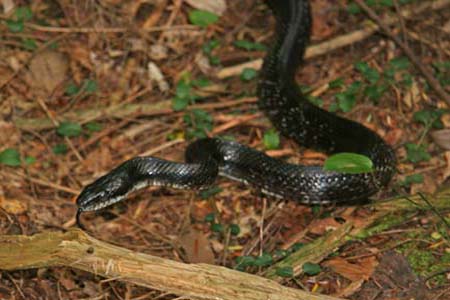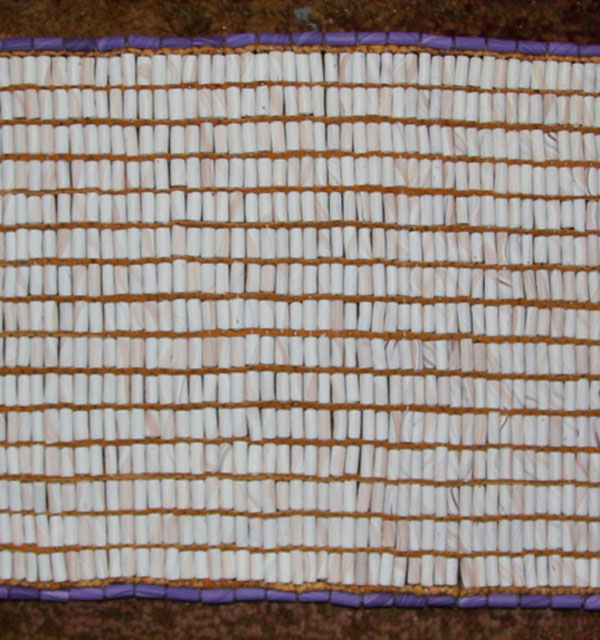 |
 |
Photographs (left to right): High Falls, Rochester, New York; Arches National Park, Utah; Black Racer, West Virginia
Wampum Belt Archive
Great White Belt
16th Century
Original - NMAI Cat. #175206.000


Middle image: Full length based on original bead count.
Bottom image - Close-up showing the horizontal edging with light-colored purple beads.
Reproduction R. D. Hamell Jan 12 2010
Original Size: |
unknown |
Reproduction: |
Beaded Length: 34.0 inches. Width: 7.25 inches. Length w/fringe: 68.0 inches. |
Beads: |
17 Rows Wide by 198 Rows Long. Edged with two rows of 83 purple beads. Total beads: 3,136. |
Materials: |
Warp: Leather. Weave: Artificial Sinew. |
Description:
Said to be the great white wampum belt Skanotakenrata'ko'wa given by Deganawida, cofounder with Hiawatha of the Iroquois League, at the time of its formation in the sixteenth century. When the Onondagas were attacked by the French and Caughnawagas, they lost some of their belts of which this was one and since then the Caughnawagas have refused to surrender them to the Onondagas. Rick Hill of the Six Nations (Ontario, Canada) had stated: "Many would argue that the date of the Confederacy is much older. It is fair to say that the Haudenosaunee believe that the original of this belt was made about 1,000 years ago. The length is unknown, may have been quite large, but was cut in half, as well as, a 'figure' removed. This took place sometime after the Revolutionary War." (Rick Hill, Personal Communication).
Dr. Hill noted that the artist, Rufus Grider, when he painted the belt that half of the belt went to Grand River. This is the half that is shown in the photograph above than in DC in 1871 by Hale. There is no information where the other half has gone.
Reference:
Rick Hill. Seneca Six Nations, Brantford Reserve, Ontario, Canada.
National Museum of the American Indian.
 |
 |
 |
 |
 |
 |
 |
 |
|---|
